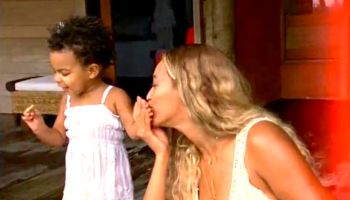VIA THE WASHINGTON POST:
Many of the most prestigious — and expensive — colleges in the Washington region have capped annual tuition increases at 4 percent for the coming academic year, a gesture, school officials said, of fiscal restraint and a signal to families of the college-bound that they are doing their part to remain affordable.
Several schools said their fall tuition reflects the smallest annual increase in many years. Tuition increases were uncharacteristically small this year as well, for concern that a significant increase would scare off recession-weary families. But the nation’s private colleges still are fighting against sticker shock. At least three in the Washington area will charge more than $40,000 in tuition alone in the 2010-11 academic year, excluding fees and living expenses.
“I think what we have done is keep the tuition as low as we can, given the situation we are all in,” said Dennis O’Shea, spokesman for Johns Hopkins University. Tuition at Johns Hopkins rose 3.8 percent this year and will rise another 3.9 percent next year, to $40,680. Officials said they are, together, the smallest annual tuition increases at the school since the mid-1970s.
Tuition for incoming freshmen at George Washington University will reach $42,860, representing a third consecutive year of 3 percent increases. GWU is nominally the most expensive college in the area, but the designation is misleading, because the school has an unusual policy of charging students the same tuition throughout their undergraduate years. Average tuition for current undergraduates remains below $40,000.
Undergraduate tuition at Georgetown University will rise 3 percent to $39,768. Tuition will rise 3.9 percent to $39,500 at Washington and Lee University in Lexington, the smallest increase there in more than a decade. Loyola University Maryland will charge $37,950, a 3.9 percent increase; along with a similar increase this year, it’s the smallest change in 30 years. The University of Richmond, Goucher College and Washington College all report 4 percent increases.
College officials say they are making institutional sacrifices to keep tuition increases minimal at a time when college endowments have taken catastrophic losses. Johns Hopkins, for example, is under a wage freeze.
But the college-bound population may be averse to any increase, said James Boyle, president of the Arlington-based membership group College Parents of America.
“What would stand out is a college that says, ‘We’re not raising prices at all,’ ” he said.
At least seven colleges have frozen tuition in 2010-11, according to the National Association of Independent Colleges and Universities in the District: Culver-Stockton College in Missouri, Fresno Pacific University in California, Hiram College in Ohio, Minneapolis College of Art and Design, the Sage Colleges in New York, Southern New Hampshire University and Thomas Aquinas College in California. Many big-name schools, including the University of Pennsylvania and Syracuse University, are capping increases at 3 or 4 percent.
College officials are defending even modest increases. In a letter to parents and students this month, Goucher President Sanford Ungar wrote that, “As steep as its cost may seem, [Goucher’s tuition] is still below that of many similar institutions and, we are convinced it is a good value and excellent investment.”
An industry survey by the independent colleges association found a 4.3 percent tuition increase among its members this year, the lowest figure reported in 37 years. Tuition and fees averaged $26,273 this year at private, nonprofit colleges, according to the New York-based College Board.
“Prior to the recession, average annual tuition increases at private colleges were about 6 percent. That’s now dropped to around 4 percent,” said Tony Pals, spokesman for the D.C. industry group. Preliminary results from a survey of 2010-11 tuition suggests something “closer to last year’s numbers than the pre-recession average,” he said.
Not every school is following the 4 percent cap. Tuition at American University will rise 5 percent in fall to $36,180. Tuition at St. John’s College in Annapolis will rise 4.5 percent to $41,792, passing the $40,000 marker that other schools have chosen not to cross.
Colleges are limiting tuition increases for fear that large increases will drive students away, Pals said: “There’s a lot of concern that if tuition goes up too quickly during an economic downturn, it could hurt enrollment.”
A pattern of 5 and 6 percent tuition increases over the past two decades has fueled a public perception of runaway prices in private higher education. The reality is more complex. Private tuition and fees have risen less than 3 percent annually since 1990 after adjusting for inflation, according to the College Board. The net price of private college, after subtracting grant aid, has actually gone down in the past five years.














